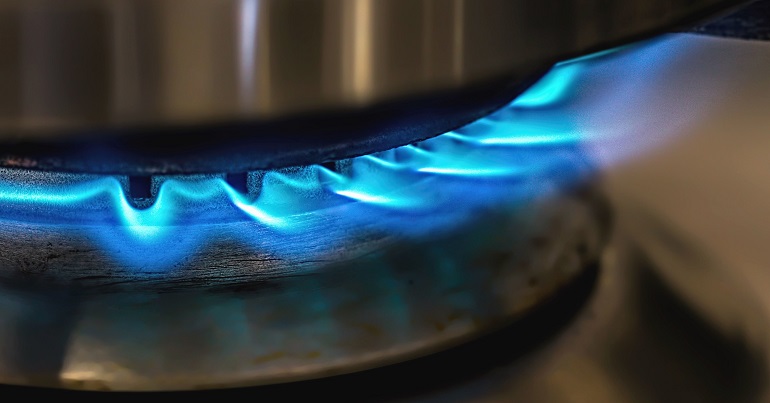What the collapse of Bulb and other suppliers means for our energy system

Energy firms have been collapsing left, right and centre. The recent demise of both Bulb and Orbit means 27 suppliers have gone bankrupt this year, driven by a rapid rise in gas prices and the wholesale price of electricity. Bulb brought this continued crisis to a new stage. It is the largest to go bust and until a few months ago, it was a darling of the tech sector, green advocates graced with a visit from the prime minister. At the moment the effect of this sector’s collapse is relatively minor, maybe even not entirely negative, but it tells of trouble ahead.
Which firms are collapsing
Energy supply firms are the people who bill the public for power. This does not mean that they generate it. They bill the public for gas and electricity, which they then buy almost exclusively from regional distributors (DSOs) and the National Grid ESO. The National Grid ESO in turn buys power from a variety of generators, intercontinental transistors (many of which National Grid owns) and increasingly storage facilities.
The suppliers make their profit from a variety of avenues, One way to do this is to overcharge customers, another is to reduce administration, obligations and processing costs and another is smart decisions about energy purchases. Many of them also engage in energy generation, selling energy to the national grid. Some of them – such as octopus energy – engage in innovative attempts to provide other services for their customers. However primarily they make money on the difference between what they bill customers and the cost of purchase of the power that the customers use.
For much of the last decade this has been relatively simple, wholesale prices have mostly fallen, or remained steady. Ofgem (the regulator) gave smaller firms certain exceptions from some of the social obligations that make up energy bills in order to encourage firms into the market, and diminish the power of the ‘Big Six’ racket. Firms like Bulb also simplified the billing system developed by the larger incumbents allowing them to save on admin, costs another significant part of the bill.
Encouraged by relentless drumbeat of ‘money experts’, a significant proportion of the market started regularly chasing cheaper, or greener energy. This allowed these firms to quickly gain customers, either registering profits, or record the kind of market share growth that meant investors where willing to underwrite losses.
Ofgem and three successive governments have been convinced that the way to fix the energy market, dominated for the last decade by the incumbents, was to encourage competition and lower barriers to entry. This allowed firms to enter with little capital and some pre-purchased software.
With hindsight this may not have been such a good idea. A lot of these firms now look like little more than shady middle men, buying power from the grid, selling it to customers and taking a profit while having little more than an office and a phone. Avro for example had less than a dozen employees, no hedging, no energy generation, paid out handsomely to PR firms run by the directors family and its father and son directors pocketed £2.2 million in bonuses this year as their compony registered a £28 million loss. Some of these firms have seen their owners walk away pocketing substantial pay checks.
What went wrong
Bright Green covered some of the causes of the gas and electricity spike in October. Prices rose faster than anyone could have expected. It is possible for firms to avoid this shock, or mitigate it in 4 main ways:
- They could have signed contracts for the gas they were going to use in advance at fixed prices. Firms like Bulb do not appear to have done not done this, partly because they are then locked into a contract and can not benefit if the price drops. Many of the bigger firms seem to have done so.
- They could have bought hedging or insurance instruments. Many firms were running in such a slim way that they cut down on these sorts of costs.
- They could own generators and offset their losses by selling to the grid and record high prices. One of the big winners of this seems to be the national grid itself that made record profits, as power on the still working Norwegian interconnectors went for eye watering amounts
- They could pass costs onto consumers, an option within limits for Octopus energy and those with particularly Green tariffs. However other firms could not do this due to the energy price cap.
During the 2015 general election labour promised an energy price cap, where Ofgem would set a maximum amount that firms were allowed to charge on their default tariff (what most consumers were on). This was at the time denounced as Marxism by the Tories, who later went on to adopt the policy.
One of the Tories’ arguments against the policy was that this sort of government interference in the market would leave firms unable to respond to rapid price changes. It turns out they were right (about the price changes – not the Marxism).
Ofgem had calculated the price cap before the price spike, insufficiently hedged firms were left charging customers far less than it was costing them to buy power. They either needed a mass injection of capital from supportive investors, or they would go bust. Almost all went bust. Ofgem now faces considerable criticism for allowing for many underhedged undercapitalised firms into the market.
In a scenario without the price cap, fewer firms would have gone bust, but this would be as they were passing their costs directly onto consumers. Those advocating for a price cap are almost certainly right that this would have been a far worse option plunging many deeper into poverty.
What happens now
The fear is that poverty is being postponed rather than prevented. Ofgem has little choice but to raise the price cap at the next review to reflect higher power prices. With so few firms left in the market there is a fear that they will band together and keep prices high. Customers from the failing suppliers are protected for now, but come the new year are likely to see a substantial price hike, as are all of us.
At this point, there is little that anyone can do to lower energy costs. Policies that could have prevented us getting to this point include: energy efficiency improves, investment in renewable energy, nuclear, or storage (all looking cheaper than gas). The Green Party has advocated for all of the above and a one-off cash injection for consumers to pay for this rise in energy bills..
However, in the absence of the Green Party of England and Wales taking power before 2022, there may be reasons to feel less grim. These reasons can be found by looking closer at Bulb.
Why did Bulb fail?
Bulb is different to many of the other energy firms that have failed. This is partly due to it’s size. It was much, much larger – becoming the 7th biggest supplier in the UK. 1.7 million of the 4 million customers who have seen their supplier go bankrupt so far are with Bulb.
They are also – unlike some of the others – a serious commercial venture. They entered the market with a single tariff cutting admin costs, spent heavily on marketing and in 2015 were one of only a handful of firms committed to 100% renewable power. Throughout the mid 2010s the company won a collection of awards. The immediate cause of Bulb’s collapse was that it had no protection against a price rise, a rise that Richard Murphy identified as causing concern in their 2020 annual report. Additionally, like many firms growing market share they racked up considerable losses early on, and unlike other more healthy businesses Bulb did not seem either able or interested in converting its rapid market growth into a healthy balance sheet.
Bulb was effectively growing market share by undercharging customers, a higher price could have included some protection against price rises. The cost of this failure will now be borne by the government and recouped through higher consumer bills.
It is also worth noting that unlike some other new entrants in the market – such as Good Energy, or Ecotricity – Bulb never actually generated renewable power. It merely bought renewable obligation certificates to cover the power it was supplying. When it entered the market, this was – as the New Scientist notes – at least marginally helpful in driving up demand for these certificates and forcing larger firms to generate more renewable power. By 2018 it was a standard business practice and almost every firm was offering a Green tariff covered by renewable energy. As The Guardian notes, by the end Bulb was not even particularly Green. It had morphed into a fancier, larger version of the shady middlemen in other firms. However, there was a moment when it was part of a wave of firms driving change, which in some ways makes it failure more depressing.
Does this matter?
In some ways, the failure of Bulb matters only marginally. These firms were not providing any market function another supplier was not also doing, probably better. Whatever purpose Bulb had served, it was now pointless. It is possible their customers will not notice as they are transferred to another supplier. The failures of these firms and socialisation of their losses will yield marginally higher prices, but the main driver will be the higher price of gas.
I have been unable to find anyone suggesting that the UK energy market is not broken. Suppliers often perform little useful function, and are now failing and socialising their losses to the rest of us. Increasingly prices are set centrally and much overhyped consumer choice is reduced to a fig leaf. The system is neither delivering reliably low prices, nor constantly supporting decarbonisation.
The collapse of energy suppliers is drawing considerable attention now, and they are in some ways merely one of the least harmful symptoms of decades of policy failure. By themselves their impact is limited, but it is a warning of the costs that without urgent and imaginative government action those of us who use power in the UK will pay for years to come.
It seems likely that though their failure now causes pain, many of these collapsing firms should not have existed in the first place. Their failure should bring an end of three decades of sticking plasters that have been attached to the energy system since privatisation. Another round of half measures will only pass the problem along.
PS. We hope you enjoyed this article. Bright Green has got big plans for the future to publish many more articles like this. You can help make that happen. Please donate to Bright Green now.




Leave a Reply